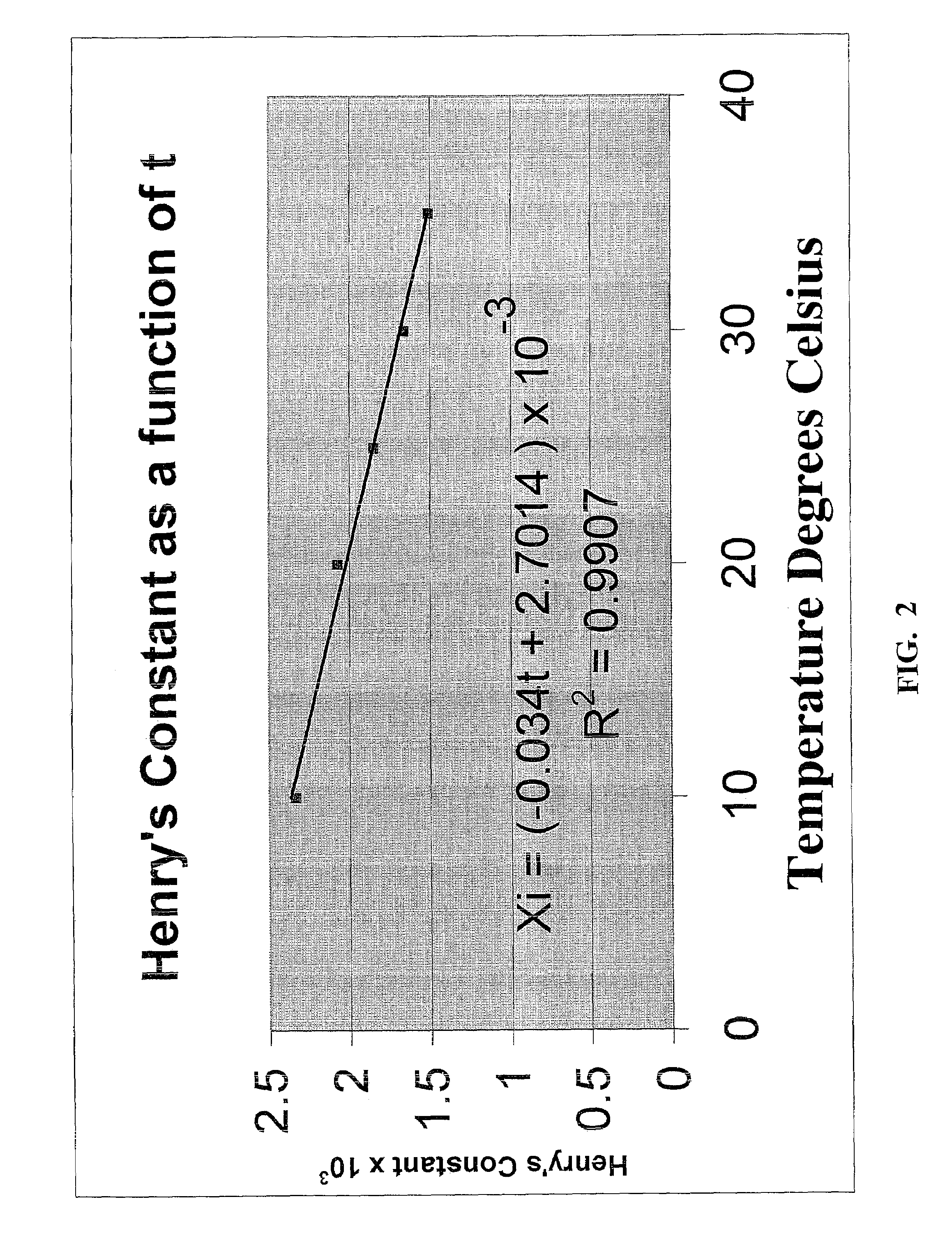Method for determining the chemical dosage required to reduce sulfides in wastewater to acceptable levels
a technology of sulfide and chemical dosage, applied in the direction of sedimentation separation, biological material analysis, disinfection, etc., can solve the problems of total sulfide, large problem of hydrogen sulfide, toxic at relatively low concentrations and also extremely corrosive, etc., to achieve reliable and simple method, efficient and economical method
- Summary
- Abstract
- Description
- Claims
- Application Information
AI Technical Summary
Benefits of technology
Problems solved by technology
Method used
Image
Examples
Embodiment Construction
I) Batch System.
Description of the Apparatus.
[0033]Referring to FIG. 1, a batch system 10 for determining dissolved sulfides in a waste stream includes a removable lid 12 that makes a gas tight seal when secured onto a reaction vessel 11. A gaseous hydrogen sulfide sensor 19 senses the interior of vessel 11. In the illustrated embodiment, sensor 19 is mounted to lid 12 and has a sensing opening 25 that is protected against splashing by splash shield 20. A stirring device consisting of a motor 16, a shaft 17 and an impeller 18 is provided and may be mounted centrally through the base 13. A vent tube 14 vents vessel 11 such as through the lid 12. A port 29 with a coupling 28 contains a non-return valve to which a chemical addition device 15 can be connected for adding accurate volumes of chemical 26, such as through a non-return valve 28 to a port 29 of vessel 11.
[0034]The reaction vessel 11 has a temperature sensor 21 and an optional pH sensor 22 mounted so as to be immersed in the w...
PUM
| Property | Measurement | Unit |
|---|---|---|
| Temperature | aaaaa | aaaaa |
| Concentration | aaaaa | aaaaa |
| Odor threshold (mass) | aaaaa | aaaaa |
Abstract
Description
Claims
Application Information
 Login to View More
Login to View More - R&D
- Intellectual Property
- Life Sciences
- Materials
- Tech Scout
- Unparalleled Data Quality
- Higher Quality Content
- 60% Fewer Hallucinations
Browse by: Latest US Patents, China's latest patents, Technical Efficacy Thesaurus, Application Domain, Technology Topic, Popular Technical Reports.
© 2025 PatSnap. All rights reserved.Legal|Privacy policy|Modern Slavery Act Transparency Statement|Sitemap|About US| Contact US: help@patsnap.com



